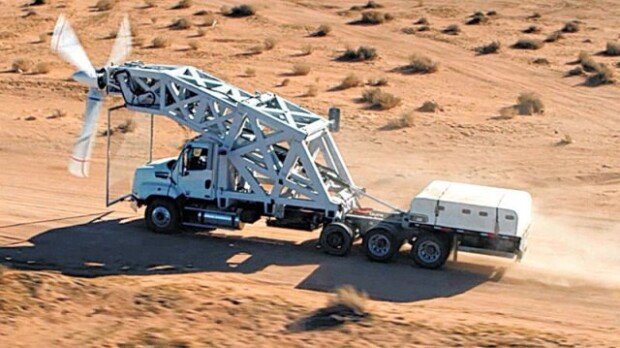Hanwha Systems conducts ground tests for electric propulsion system
Hanwha Systems conducts ground tests for electric propulsion system
Posted January. 25, 2022 08:08,
Updated January. 25, 2022 08:08

Hanwha Systems announced on Monday that the company began ground tests for an electric propulsion system, a key technology for urban air mobility (UAM). The most important step to realize UAM has begun.
Overair, Hanwha Systems’ subsidiary in the U.S., released a test for the electric propulsion system of UAM vehicle named ‘Butterfly’ in the desert of Southern California on Thursday (local time). Hanwha Systems invested 30 billion won in Overair, a company specialized in personal air vehicles, in December 2019 and became its largest shareholder. Hanwha Systems and Overair are co-developing Butterfly. The electric propulsion system has been tested indoors since August last year and was recently tested outdoor for the first time. As a UAM vehicle uses electricity as the source of power, the performance of an electric propulsion system is the most critical for stable vertical takeoff and landing.
The desert is a tough environment with heavy wind and many particles, including sand, in the air. As the vehicle’s large wings can face multiple variables during operation, the test was conducted under the worst-case situation. The power that the wings receive is verified with computer simulation software. The wings for Butterfly will be designed and manufactured based on these tests.
A UAM vehicle should be able to take off and land vertically, unlike a general airplane that runs on a long runway, because it needs to move freely from buildings’ rooftops or transfer centers to be used as transportation in urban areas. An electric propulsion system is critical for a UAM vehicle to travel dozens or hundreds of kilometers just with batteries and move accurately from location to location in a chaotic urban environment.
Butterfly will be equipped with four wings. The wings will face the sky when taking off while facing the direction of moving when flying forward. A prototype will be revealed next year. A test flight in 2024 and a test operation from the urban center of Seoul to Gimpo International Airport in 2025 are scheduled.
Hyung-Seok Seo skytree08@donga.com




![곽규택 ‘또 마이크 끄시게요?’ 스케치북 들자 우원식 헛웃음[청계천 옆 사진관]](https://dimg.donga.com/c/138/175/90/1/wps/NEWS/IMAGE/2025/12/11/132947836.1.jpg)
![범퍼에 고라니 낀 줄도 모르고…버젓이 주차한 운전자[e글e글]](https://dimg.donga.com/c/138/175/90/1/wps/NEWS/IMAGE/2025/12/11/132946797.3.jpg)

